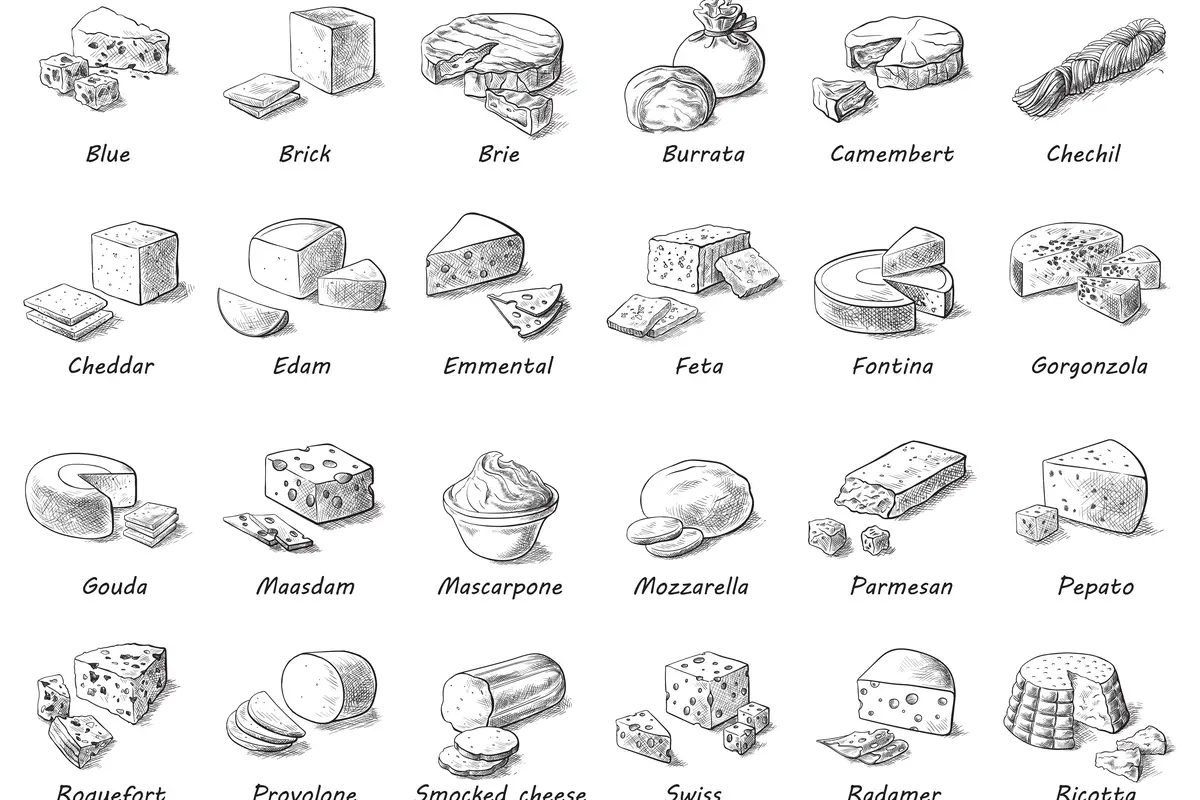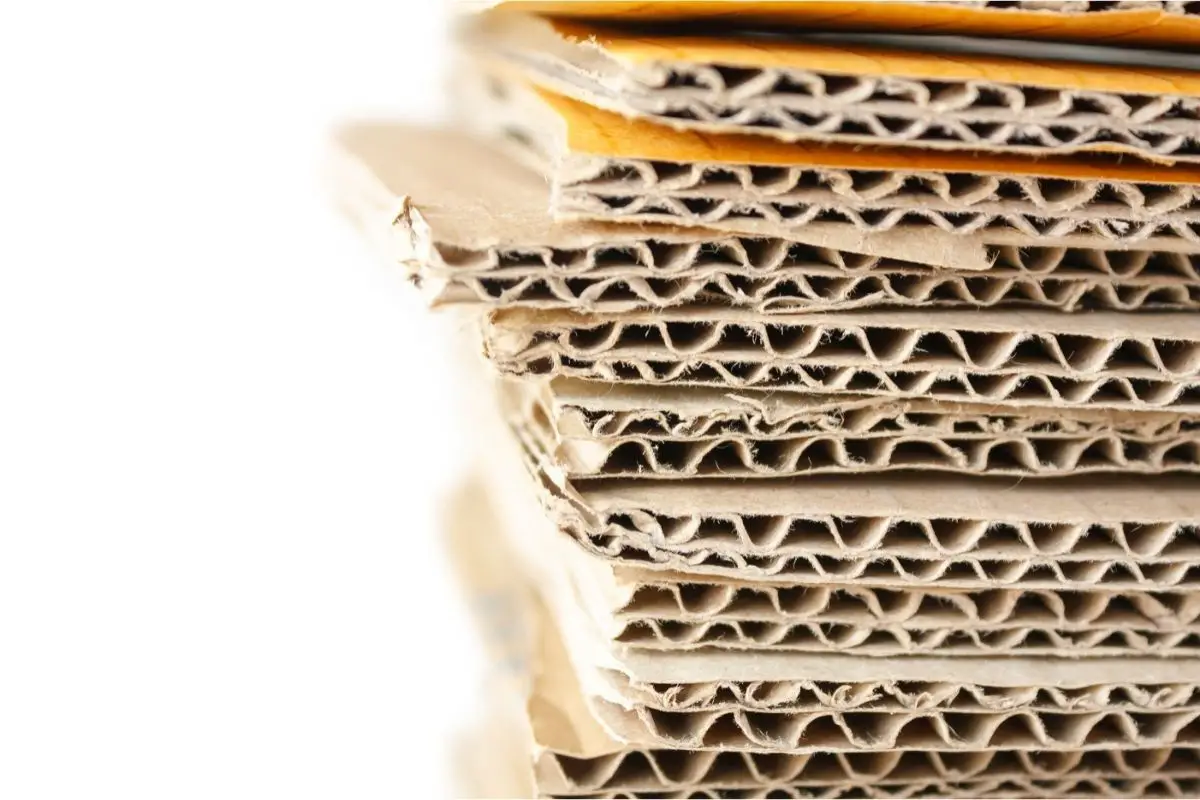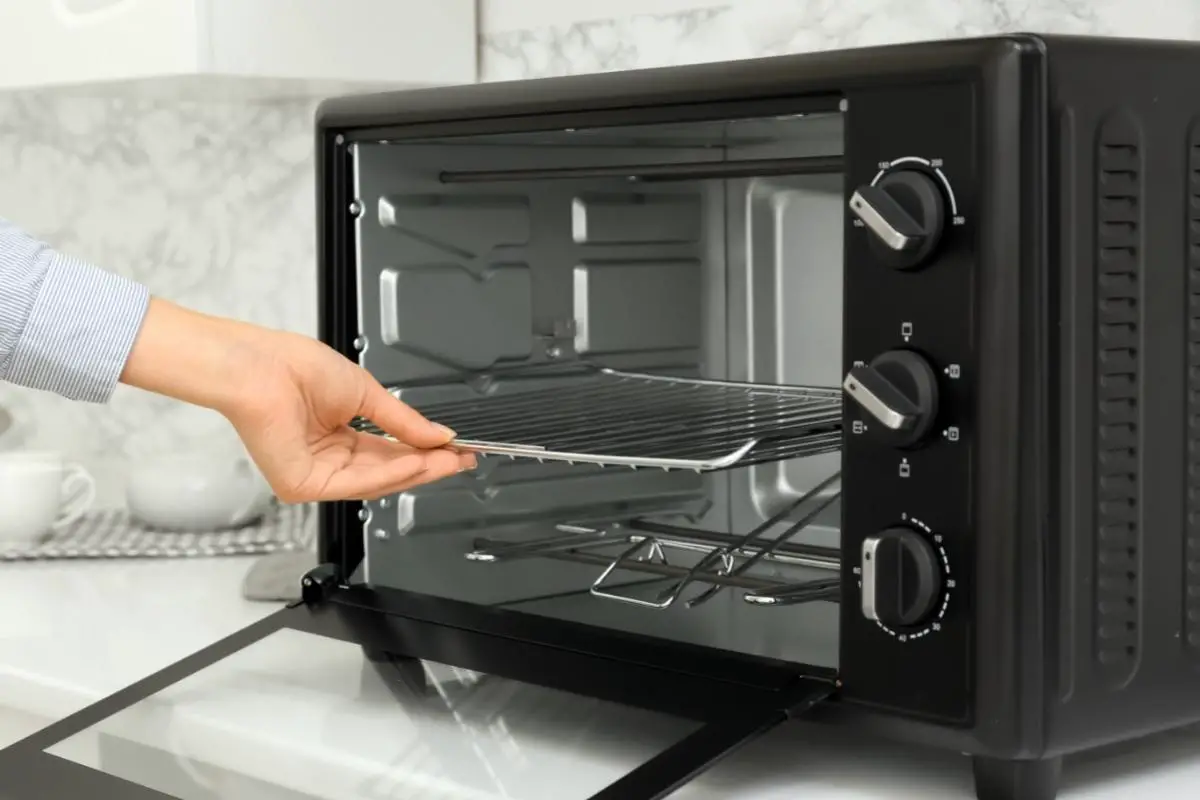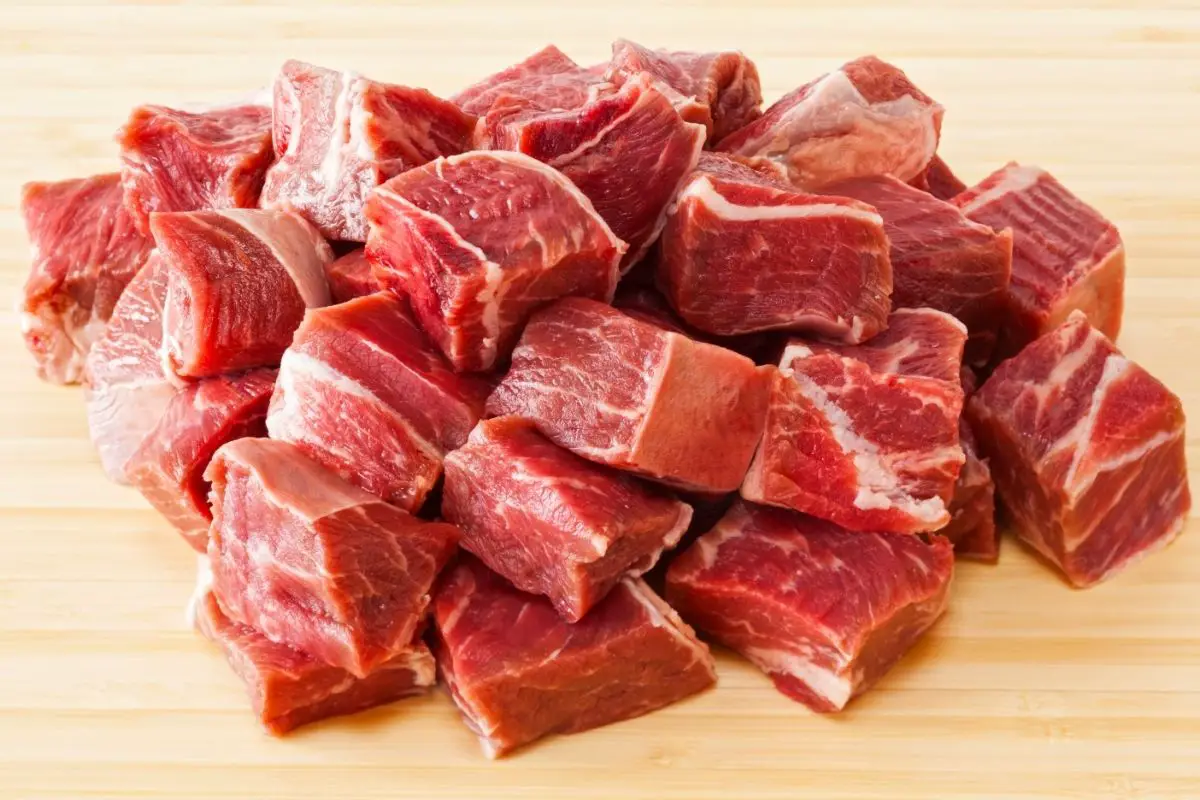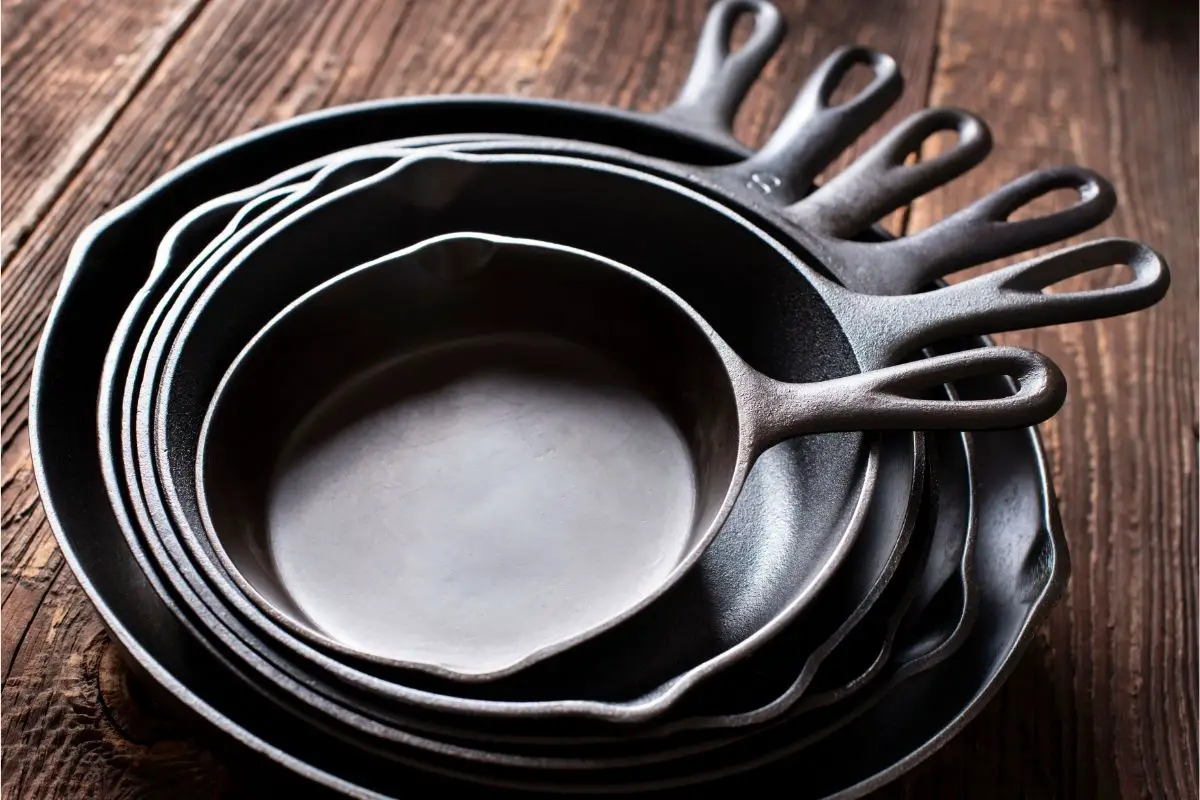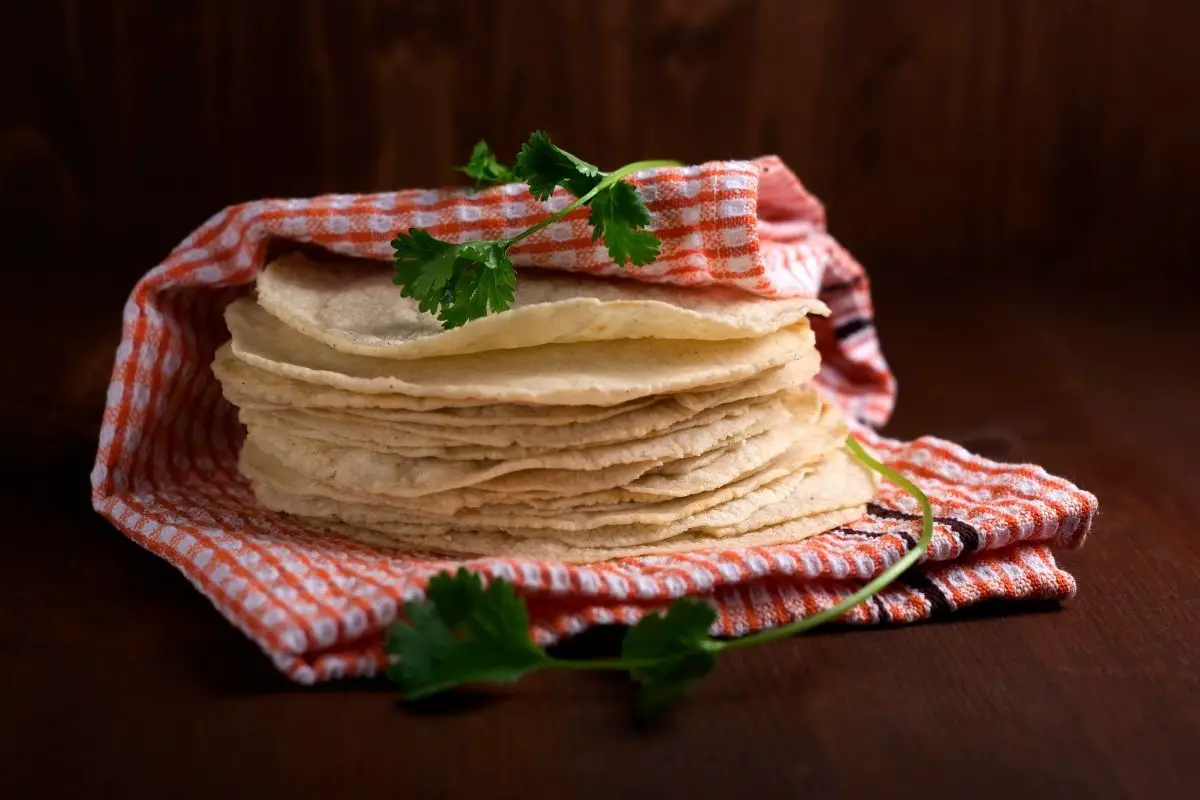Pizza is one of the most popular foods in the world, and it’s also one of the most calorie-dense foods out there. This means that a slice of pizza can pack a lot of calories into your diet without you even realizing it.

And if you’re eating pizza on a regular basis, then you could be consuming thousands of extra calories each year.
So how many calories does a slice of pizza have? That depends on what kind of pizza you get.
The average slice of pepperoni pizza has about 400 calories, while a cheese pizza will typically contain around 500 to 600 calories.
But these numbers are just averages, so don’t let them fool you. You can find pizzas with anywhere from 300 to over 700 calories per slice!
So how do you know which pizza slices are best for you? Well, we’ve got some tips for you below.
We’ll show you how to pick the right pizza size, toppings, and ingredients to make sure that you eat the perfect amount of pizza every time.
And remember, when it comes to pizza, moderation is key. If you want to lose weight or maintain your current weight, then you should only have one slice of pizza once or twice a week.
In fact, just because you love pizza doesn’t mean that you need to swap it out for something less calorie-dense.
As it just so happens, pizza can be enjoyed as part of their healthy lifestyle, and this is where we come in to help you out.
In this article, we are going to be exploring how many calories are in pizza and some ways that you can make this popular food more nutritional and healthy.
So, ready to discover how many calories are in a standard slice of pizza, as well as how to make your next pizza pie more healthy? Just read on!
How Many Calories Does A Slice Of Pizza Have?
The first thing that you need to understand is that pizza is not a low-calorie food.
It’s actually very high in calories, and that’s why it’s such an easy choice for people who want to indulge themselves but still keep their diets balanced. So, how many calories are in the average slice of pizza?
Well, according to the USDA, the average slice of pepperoni contains around 400 calories. On top of that, cheese pizza will usually contain between 500 and 600 calories per slice.
So, if you’re looking at a typical pizza menu, you’ll see that they offer both pepperoni and cheese options.
Both of these types of pizzas will give you plenty of energy throughout the day, but you may want to choose the cheese option if you’re trying to cut back on calories.
Now, you might think that since a slice of pizza is already packed full of calories, it would be impossible to add anymore to it. However, there are several ways that you can customize your pizza to make it healthier.
For example, you can opt for lower-fat cheeses like mozzarella instead of cheddar, or you can skip the meat altogether by choosing a vegetarian pizza.
You can also reduce the number of toppings that you use to create a lighter version of the pizza. This way, you won’t be adding too much fat and calories to your meal.
Another great idea is to order your pizza using whole wheat crusts.
These crusts are made from 100% whole grain flour, and they tend to be higher in fiber than regular crusts. So, they’re better for you overall.
If you really want to go all out, you can even try ordering a gluten free pizza! There are plenty of brands available now that offer gluten-free crusts, and they’re often quite tasty.
These types of crusts are usually very low in calories, and are even known to be easier to digest than other types of pizza crusts.
There are even a variety of pizza-chains and restaurants that offer gluten-free pizzas now, too. Be sure to check out the menu next time you decide to eat some pizza out or even while you are ordering pizza in.
What Toppings Are Best For Low-Calorie Pizzas?
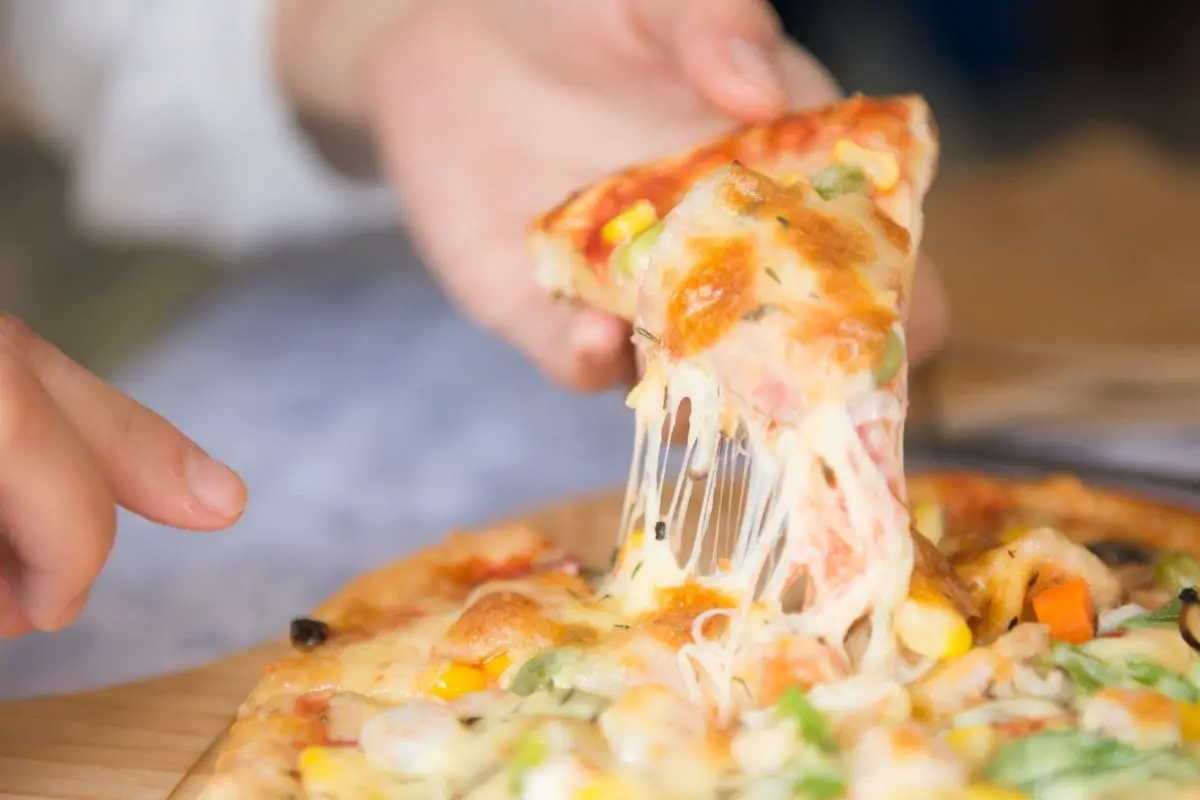
When you’re thinking about what toppings to put on your pizza, you should always consider the nutrition content of each topping.
The reason for this is simple: You don’t want to load up on unhealthy toppings if you’re trying to eat healthily.
For instance, you could get yourself a classic pepperoni pizza with extra cheese and bacon bits. While this sounds delicious, it’s probably not the best choice when it comes to nutrition.
Why? Well, bacon has been linked to an increased risk of heart disease, while cheese is one of the worst foods when it comes to wanting low-fat foods, as it generally has a high-fat content.
Still, that doesn’t mean that you shouldn’t be able to enjoy your favorite toppings that might not necessarily be the healthiest.
For example, if you love bacon on your pizza, then why don’t you consider opting for low-fat bacon instead? The same goes for cheese.
If you are planning on making your very own pizza from the comfort of your own home, there are a variety of healthier cheese alternatives that you can use instead of regular cheese.
On the other hand, the majority of popular pizza chains and restaurants offer a variety of healthy pizzas that you can consider eating next time you decide to order your pizza out.
To follow onwards, you should look for toppings that are good sources of protein and other nutrients.
Peppers, mushrooms, onions, olives, artichokes, tomatoes, peppers, corn, spinach, and broccoli are some examples of toppings that are rich in vitamins and minerals.
They also provide a lot of fiber, which helps keep you feeling fuller longer.
So, how do you know whether, or not, a particular topping is going to be healthy? One of the easiest things to do is to check the nutritional information label that accompanies every product.
Most manufacturers will include this information right on their packaging.
In addition, many websites have calculators that allow you to find out exactly how many calories are contained within any given food item.
So, the next time you’re looking at a menu, take note of the calorie count listed on the side of the pizza box.
Then, compare this figure to the number of calories that you think you’ll need throughout the day. This way, you will be able to enjoy your favorite pizza without having more calories than you would like to.
Why Does Pizza Tend To Have So Many Calories?
The answer to this question is actually pretty straightforward. When you make a pizza, you basically just add ingredients together and bake them until they’re cooked through.
As a result, the pizza contains numerous carbohydrates, fats, and proteins. These three macronutrients contain numerous calories. So, when you eat a slice of pizza, you’ll likely consume more than 300 calories.
If you’re looking to lose weight, you may want to avoid consuming too much pizza.
However, if you’re simply trying to maintain your current body weight, then you can definitely enjoy pizza without worrying about gaining too much weight.
Just remember to stick to a moderate portion size. You don’t want to overeat, but you also don’t want to under-eat either.
What Are Some Healthy Alternatives To Traditional Pizza?

When you’re deciding what type of pizza to order, you may want to opt for something that’s lower in fat and higher in protein. There are plenty of options available. Here are a few ideas:
Chicken & Cheese Pizza
Sure, we know what you might be thinking, “chicken & cheese pizza?” but hear us out – because this pizza can actually be made to be pretty darn healthy.
Instead of using regular mozzarella cheese, try using part-skim mozzarella cheese. This type of cheese has less fat and fewer calories than traditional cheeses.
It’s still high in protein though, so you shouldn’t worry about missing out on essential nutrients.
As for the chicken? Chicken is lean meat, which means that it can be eaten in moderation without being unhealthy. Just make sure that it’s fresh and, if possible, organic.
Vegetarian Pizza
If you’d prefer to go vegetarian, then you probably already know that tofu is one of the healthiest types of meat substitutes.
Many people find that tofu is a great alternative to using meat, especially as it doesn’t have an overbearing taste which means that it can be combined with a variety of other healthy and delicious nutrient-rich toppings.
Plus, tofu is even low in saturated fat, which makes it a perfect alternative to meat for anyone that is looking to lower their cholesterol or simply maintain it.
Low Fat Pizza
Finally, if you’d like to cut back on the amount of fat that you’re eating, then you’ll want to look for a low-fat pizza. In fact, many restaurants offer a wide range of different low-fat pizzas.
They usually feature a combination of vegetables and other toppings such as fresh herbs, mushrooms, and more. The possibilities are endless!
How Can You Make Pizza Healthier?
As previously mentioned, even though you shouldn’t cut pizza out entirely from your diet simply because it’s not the healthiest of foods, you can easily swap out unhealthy toppings for healthier ones.
Here are some ideas:
Low-Fat Cheese
Instead of using full-fat mozzarella cheese, opt for lower-fat varieties like part-skim or non-fat. You can even try using fat-free cheese.
Vegetables
Instead of adding meat toppings, you can choose to go with vegetables. Try adding sliced bell pepper, onion, mushroom, zucchini, eggplant, and/or tomato slices.
Lean Meats
Another option would be to use lean meats such as turkey breast or chicken breast. You could even mix these two options together.
Fresh Herbs & Spices
Since herbs and spices are generally healthy foods, you could add them to your pizza as well. For example, you could sprinkle fresh basil leaves on top of your pizza before baking it.
Fruits
Adding fruits to your pizza is another great idea, even though it might not be the most common topping to use!
In recent times apple has become an interesting new topping used on pizza, but if you’d like to start off with something a little less crazy, pineapple is a great place to start.
Eggs
If you prefer eggs, you can always add them to your pizza. Simply scramble an egg and spread it evenly across the surface of the dough. Alternatively, you could even fry an egg and place it on one part of your pizza.
Nuts
Another good topping choice would be nuts. Almonds, peanuts, cashews, pistachios, walnuts, or hazelnuts are all excellent choices. Just remember to keep portions small.
Beans
Finally, you might also consider adding beans to your pizza. They provide protein and fiber while being low in calories. Examples include black beans, kidney beans, garbanzo beans, lentils, and white beans.
Pizzas That Aren’t Too High In Calorie Content

While there are plenty of pizzas that are high in calories, there are other options available as well. Below are some examples of pizzas that aren’t too high in calories:
Thin Crust Pizzas
Although thin-crust pizzas usually have fewer calories, you should still pay attention to their nutritional content. The best thing to do is to check the nutrition label on the back of the package.
Whole Grain Pizzas
While whole-grain pizzas typically don’t have many calories, they’re not necessarily free of calories either. It’s important to look at the serving size and portion sizes.
Gluten-Free Pizzas
Like whole-grain pizzas, gluten-free pizzas also tend to have fewer calories. However, you should still watch out for hidden carbs.
Veggie Pizzas
Similar to veggie burgers, you can make a veggie pizza by mixing chopped veggies into the dough. This way, you won’t need to worry about having extra toppings.
Margherita Pizzas
These pizzas are made up of tomatoes, oregano, olive oil, garlic, salt, and pepper. They’re quite popular because they’re easy to prepare and delicious.
White Pizza
This pizza has no sauce, but instead, uses only cheese and breadcrumbs. It’s often used as a base for other pizzas.
Hawaiian Pizza
Made with pineapple, ham, green onions, olives, and cheddar cheese, this pizza is one of the most famous pizzas around.
Pepperoni Pizza
This pizza contains pepperoni, mozzarella cheese, and red peppers. It’s very similar to Hawaiian pizza.
Vegan Pizza
This pizza is made without any animal products. It’s also known as vegan pizza. You can use tofu, tempeh, seitan, bean sprouts, mushrooms, spinach, broccoli, cauliflower, zucchini, carrots, bell peppers, and more.
The Best Way To Make Your Own Healthy Pizza At Home
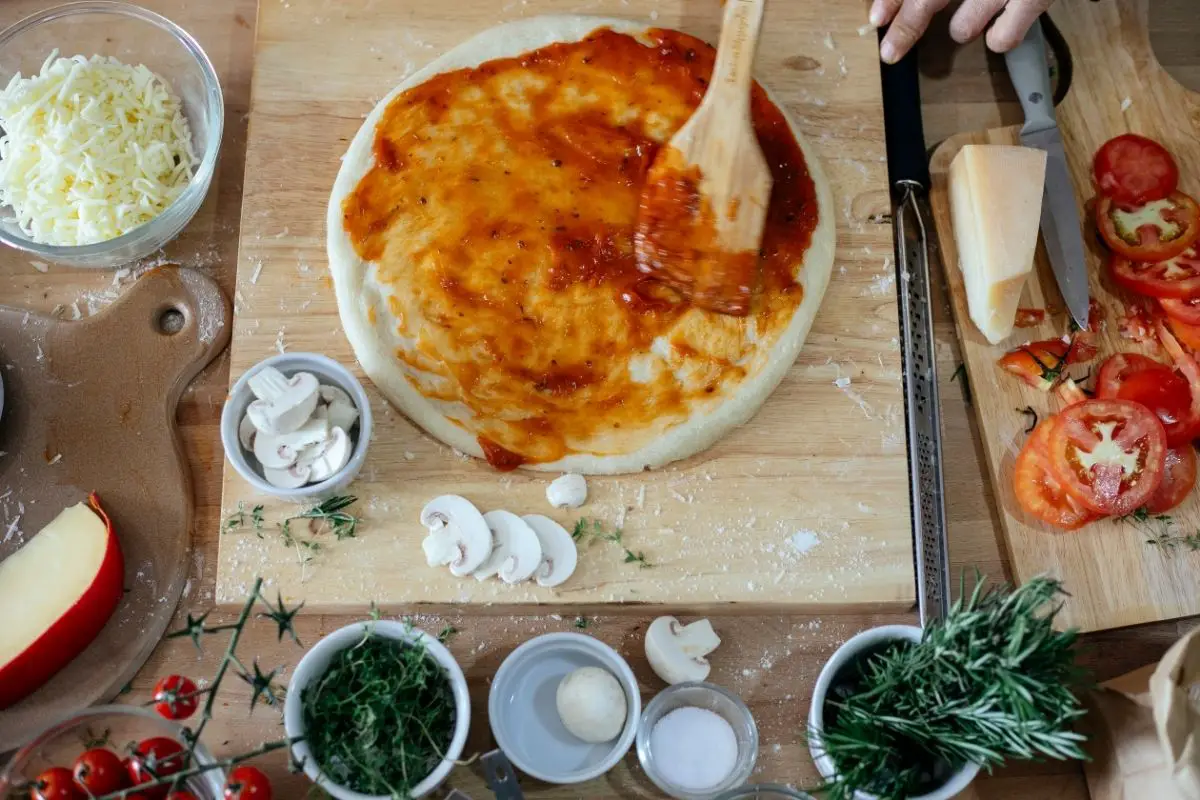
Making your own homemade pizza is definitely something worth trying. Not only does it save money, but it allows you to control what goes into your food. Plus, you get to enjoy the taste of fresh ingredients.
However, if you want to avoid spending hours in front of the oven, here are some tips to help you create healthy pizzas at home:
• Choose Low Fat Cheese – One of the easiest ways to reduce the calorie count of your pizza is to choose lower-fat cheeses. Instead of using full-fat cheese, opt for reduced-fat varieties like part-skim, light, or non-fat.
• Use Lightly Salted Parmesan Cheese – If you really want to cut down on the amount of sodium in your pizza, try using lightly salted Parmesan cheese.
• Add Vegetables – Adding vegetables to your pizza will increase its overall nutrient value. Try adding tomato slices, onion, mushrooms, spinach, or even broccoli.
• Avoid Extra Sauce – While it may seem tempting to add extra sauce to your pizza, it’s better to stick to just the basic ingredients.
• Use Fresh Ingredients – When making your own pizzas, it’s always best to use fresh ingredients. That way, you know exactly how many nutrients each ingredient provides.
• Buy Organic – Buying organic ensures that there aren’t any pesticides or chemicals added to the product. In fact, studies show that eating organic foods helps prevent cancer, heart disease, diabetes, obesity, and many other health problems.
How Many Calories Are In Some Of The Most Popular Pizzas?
Pizza is a favorite food among people of all ages. Unfortunately, not everyone knows how many calories are contained within their favorite pizza.
Here are the average calorie counts of the most common types of pizzas:
• Thin Crust Pizza – This type of pizza has an average calorie count of about 300 calories per slice. The main ingredients include flour, water, yeast, sugar, salt, and vegetable oil.
• Deep Dish Pizza – This type of pie has an average calorie count of between 400 and 500 calories per slice. The deep-dish pizza usually includes cheese, meat, and tomatoes.
• Thin Crust With Meat – This type of pizza typically has an average calorie count ranging from 350 to 450 calories per slice. The thin crust pizza usually consists of bread dough, cheese, and toppings.
• Thin Crust With Veggies – This type of pizza usually has an average calorie count of around 250 calories per slice. The pizza usually contains veggies such as onions, olives, peppers, and mushrooms.
• Thin Crusted Pizza – This type of pizzeria has an average calorie count of anywhere from 200 to 300 calories per slice. Usually, this kind of pizza doesn’t have meat or cheese.
• Thick Crust Pizza – This pizza has an average calorie content of about 600 calories per slice. It usually consists of pepperoni, sausage, ham, bacon, eggs, and cheese.
• Sausage And Pepperoni Pizza – This pizza has a calorie count of about 700 calories per slice. It normally includes sausages, pepperoni, and cheese.
• Garlic Chicken Pizza – This pizza has approximately 800 calories per slice. It often includes chicken, garlic, green bell peppers, and mozzarella cheese.
• Hawaiian Pizza – This pizza has about 1,000 calories per slice. It generally includes pineapple, ham, and cheese.
If you’re looking for a healthier option, then opt for whole wheat pizza instead. Whole wheat pizza has less than half the number of calories compared to regular white pizza.
However, if you don’t like the taste of whole wheat pizza, then you can also try low-calorie pizza options. For example, light pizza has only 100 calories per slice.
You can find these kinds of pizzas at restaurants that offer healthy menu items.
If you are planning on making your own pizza from scratch, then we recommend using this section as guidance on what you can expect your calorie intake to be.
Regardless of what type of pizza you choose, it’s important to note that you can quite easily make your pizza healthier by implementing the advice that we have already mentioned above, including making sure that you are opting for healthier pizza sauce, nutrient-rich toppings, and using low-fat cheese.
Some Tips On What To Do If You’re Trying To Lose Weight And Still Want To Enjoy Pizza
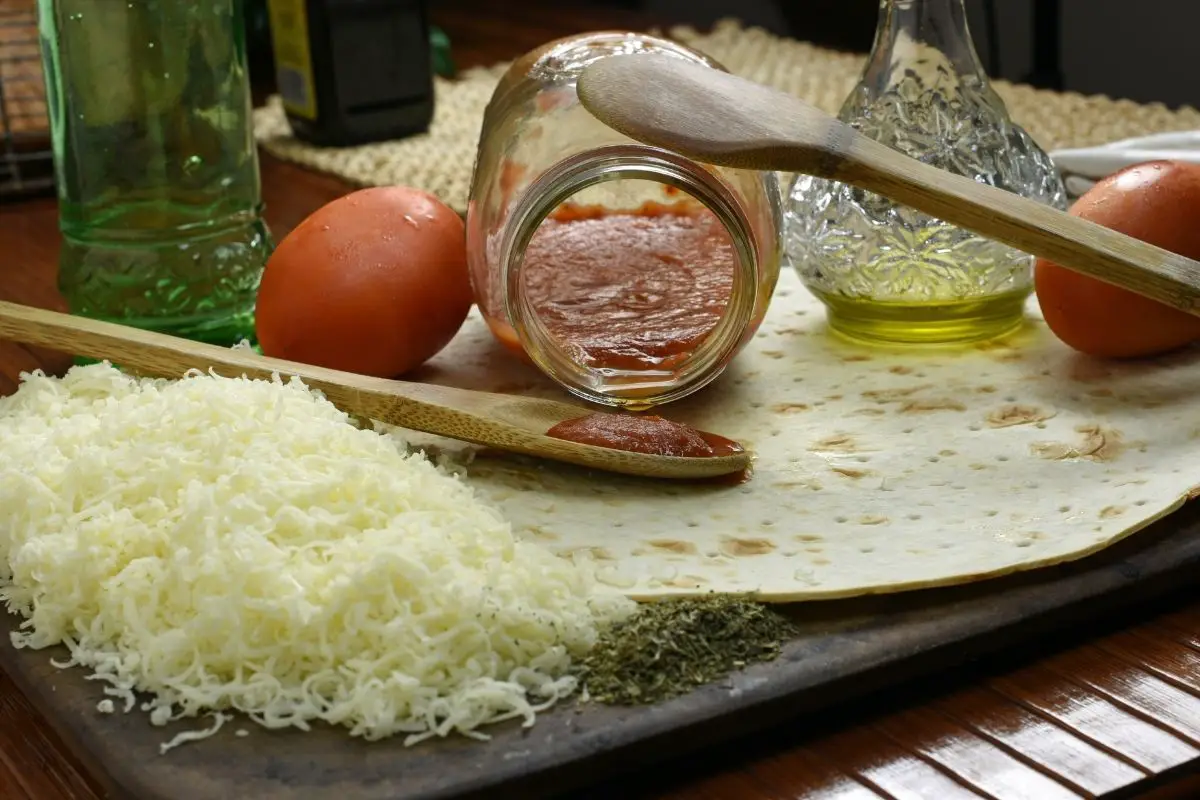
- If you’re planning on having pizza for dinner, make sure that you eat it with a salad. Salads contain lots of vegetables which help fill up your stomach without adding too much fat.
- Be careful when choosing toppings. Try to avoid using high-fat toppings such as cheese and butter. Instead, choose leaner toppings such as tomato sauce, fresh herbs, and olive oil.
- When ordering pizza, ask for extra veggies. Ask for extra veggies because they will add more fiber to your meal. Fiber helps reduce hunger pangs so you won’t be tempted to overeat.
- Avoid eating pizza after 8 pm. Eating late-night snacks is not good for your health. Your body needs time to digest food before bedtime. So, skip the midnight snack and go to sleep early.
- Don’t forget to drink plenty of water while you’re watching TV. Water keeps your digestive system running smoothly. It also helps keep your skin hydrated and prevents constipation.
- Keep a close eye on portion sizes. One slice of pizza may seem small but it actually packs in a lot of calories. Make sure that you limit yourself to one slice.
- Eat slowly. Take your time when eating pizza. Chew each bite thoroughly before swallowing. This way, you’ll get full faster and prevent overeating.
Final Thoughts
There we have it! Pizza is an Italian favorite. Whether you love it or hate it, there’s no denying its deliciousness.
But, now that you have taken the time to read through this guide, we’re hoping that you not only have a better understanding of how many calories there are in pizza, but we also hope that you now have a better understanding of how to m
The key is to use nutritious ingredients and prepare pizza in a smart manner. By following our tips, you can enjoy pizza without worrying about consuming more calories than you would like.
And don’t forget – it’s completely fine to treat yourself to your favorite pizza every once in a while without worrying about how many calories you are eating. The key is moderation! Thank you for reading.
Frequently Asked Questions
What Are Some Ways To Cut Down On My Pizza Intake?
There are many ways to cut back on your pizza consumption. Here are some suggestions:
- Choose thin crust over thick crust. Thin crust pizzas have fewer calories compared to their thicker counterparts. This means that you will eat less pizza and it won’t even seem like it because you will still be eating your usual number of slices.
- Order salads or soup alongside pizza. Instead of taking a few slices of pizza, why don’t you consider taking just one and combining it with a side salad or side soup? By doing this, it means that you will still be able to enjoy your delicious and yummy pizza while still lowering your intake of it.
- Another way that you can cut down your pizza intake while still being able to enjoy it regularly is by saving it for a treat at the end of the week or during a “cheat” day. Many people that want to reduce or cut down their pizza intake find that opting to treat themselves to their favorite pizza once every week or every other week is a very effective way to maintain a healthy diet and lifestyle without restricting themselves from enjoying pizza.
How Often Should I Eat Pizza?
Pizza is a great source of protein and carbohydrates. Since pizza contains both carbs and protein, it’s important that you eat enough pizza to meet your daily caloric requirements.
Ideally, you should eat 2 slices of pizza per day. However, if you’re trying to lose weight, you might want to stick to only one slice.
Can I Make Pizza Healthier?
Yes! You can make pizza healthier by adding vegetables to your pizza. There are many different types of vegetables that you can use to make your pizza healthier.
Some examples include bell peppers, broccoli, cauliflower, mushrooms, spinach, tomatoes, zucchini, carrots, onions, etc.
Alongside adding healthier toppings to your pizza that is full of nutrients, we also recommend that you consider using low-fat cheese, as this will reduce the overall amount of calories in your pizza.
We also recommend that you consider the base that you are using for your pizzas. The healthiest types of pizza bases are thin crust, multi-grain flour, and gluten-free bases.
So, if you would like to make your pizza healthier, then we recommend that you use one of these pizza base options that we have just mentioned in place of pizza bases that are classed as being unhealthier, such as deep base pizza bases.
How Can I Enjoy My Favorite Pizza Without Consuming Too Many Calories?
No matter how you decide to do it, just make sure that you stick to a moderate portion.
And, if you feel like you need more help, then consider ordering from a restaurant that offers nutritional information online. That way, you won’t have to guess at the calorie count.
Pizza is one of those foods that everyone loves. But when you’re watching your waistline, you’ll want to keep your portions in check. So, here are some tips to help you eat smart when you’re enjoying a slice of pizza.
Choose Thin Crust Over Thick Crust
Thin crust pizza tends to be healthier than thick crust pizza. Why? Because thin crust pizza uses less oil. Most cooking oil tends to contain around 30 calories per tablespoon.
So, by opting for thin crust pizza, you’ll save yourself consuming more calories than you would like to.
Plus, thin crust is made with less bread, which will mean that you are consuming fewer calories because you won’t be consuming as much bread as you usually would from a regular pizza.
Eat Pizza In Moderation
Just because pizza isn’t the healthiest of foods doesn’t mean that you need to stop eating it. In fact, you’ll still be able to enjoy your favorite pizza by eating it in moderation.
Why don’t you pair a slice of pizza with a side salad? Or treat yourself once a month to a delicious pizza night without worrying about how many calories you are consuming?
Go With Low-Fat Cheese Or No Cheese At All
If you don’t want to sacrifice flavor, then opt for low-fat cheese. Or, you can skip the cheese altogether.
Either way, you’ll be able to enjoy a tasty pizza without worrying about consuming too many calories if this is something that is concerning you.
Don’t Be Afraid To Ask About Nutritional Information
Many restaurants will provide nutritional information online. However, not all of them do.
So, if you’d rather avoid guessing at the calorie count, then ask your server for nutritional information. This way, you’ll be sure that you’re making the right choice.
Consider Going Meatless
Meatless meals tend to be healthier because they contain fewer calories and less fat. Plus, they also typically contain less sodium and sugar.
So, if you’re trying to watch what you’re putting into your body, then consider going meatless.
- What goes good with fried shrimp for dinner? - November 17, 2022
- Best Heat Diffusers for a Gas Stove - November 16, 2022
- Can you boil potatoes too long for mashed potatoes? - November 15, 2022


